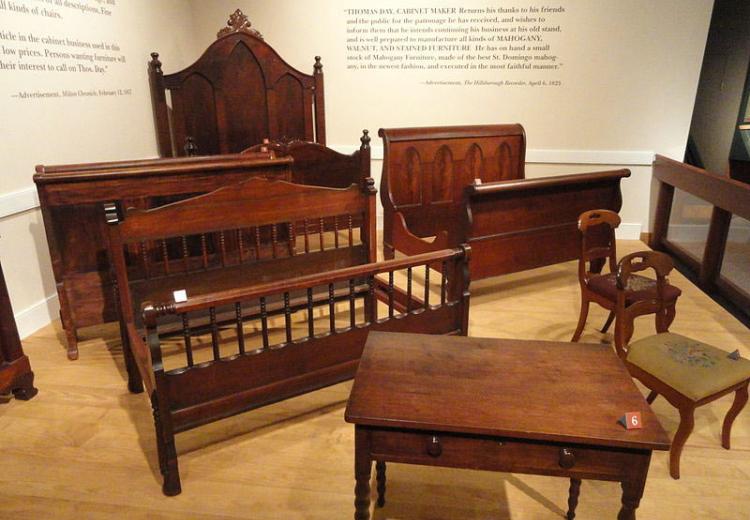Man in the Middle: Thomas Day and the Free Black Experience

Furniture by Thomas Day - North Carolina Museum of History.
Thomas Day (1801–ca. 1861) was a successful free black furniture maker and businessman who stood “in the middle” of competing forces in nineteenth-century America: between black and white, slave and free, North and South, and Africa and America. A black man who owned slaves and who also had abolitionist ties in the North, Day embodied the contradictions and complexity of his era, yet he and many other free black men and women in the South as well as the North navigated the labyrinth of race, culture, and power in nineteenth-century America. Not only did they survive, but they increased in number and many helped to “craft freedom” not only for themselves and family members but for other less fortunate members of their race.
Thomas Day remained in the South his entire life. In 1857, a national financial crisis destroyed one in three businesses and Day's furniture shop—the largest in North Carolina—also went into bankruptcy. On the eve of the Civil War, there were 500,000 free blacks living in the United States and this little understood group of antebellum Americans is brought into focus by a study of Thomas Day's life experiences.
This lesson uses Day as a focal point for students to learn about ways that free blacks attained their free status and “crafted freedom” for themselves and others through their craft and entrepreneurial skills, through political activities, through leveraging their social position and contacts, and through their art and creativity.
Guiding Questions
How is Thomas Day’s experience reflective of the free black experience?
Why do you think successful free African Americans would have been concerned about helping the enslaved attain their freedom?
Learning Objectives
Recall who Thomas Day was and list critical facts about his life.
Recall several strategies free blacks used to deal with their second-class citizenship.
Compare and contrast how Thomas Day crafted freedom—enhancing the freedoms and opportunities for himself, his family, and members of his race with strategies used by other 19th-century blacks such as those found on the Crafting Freedom website.
